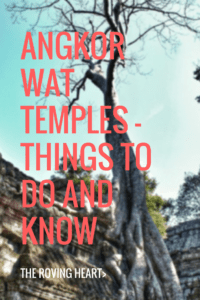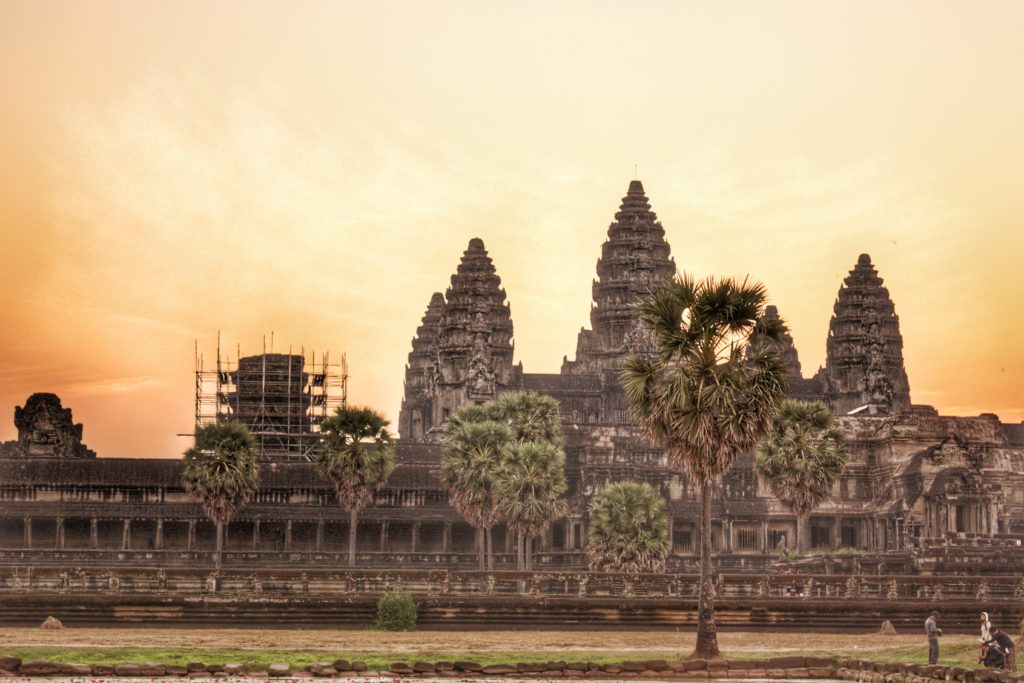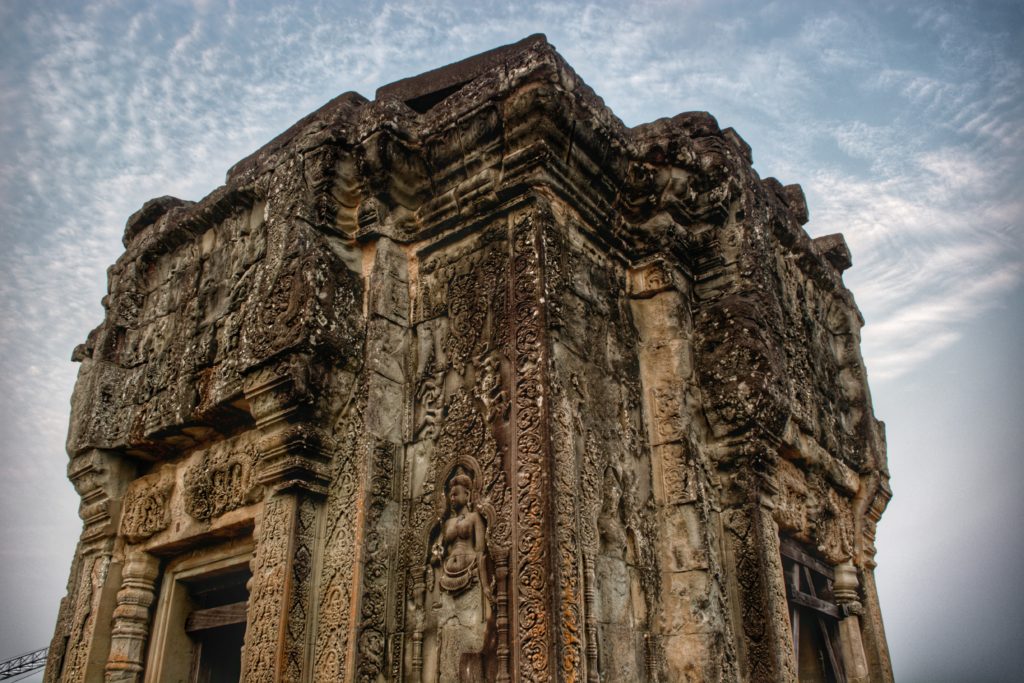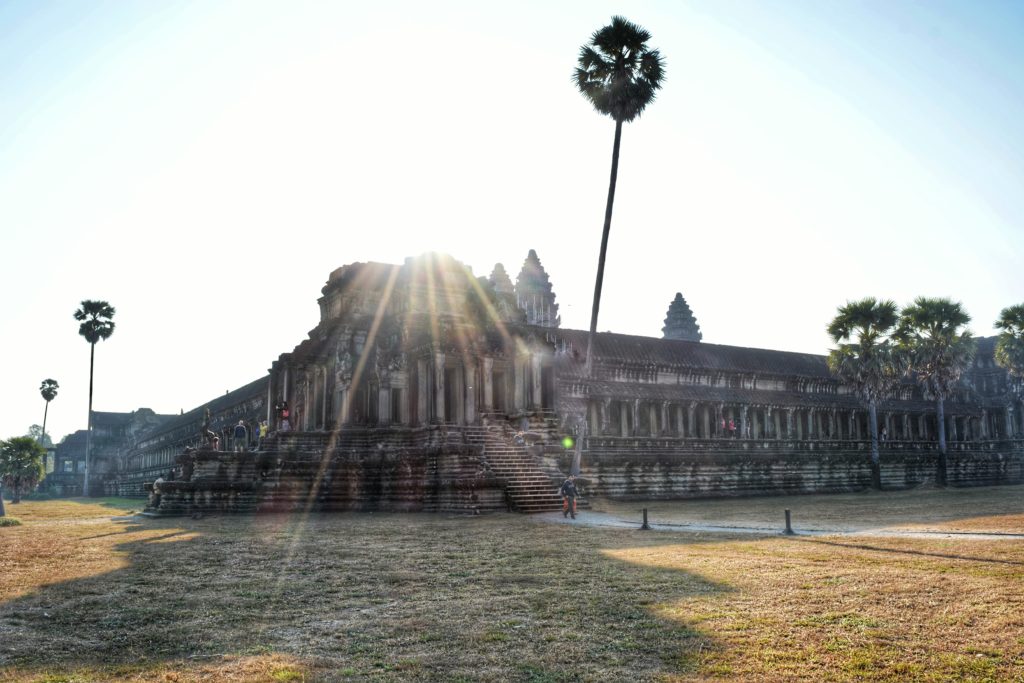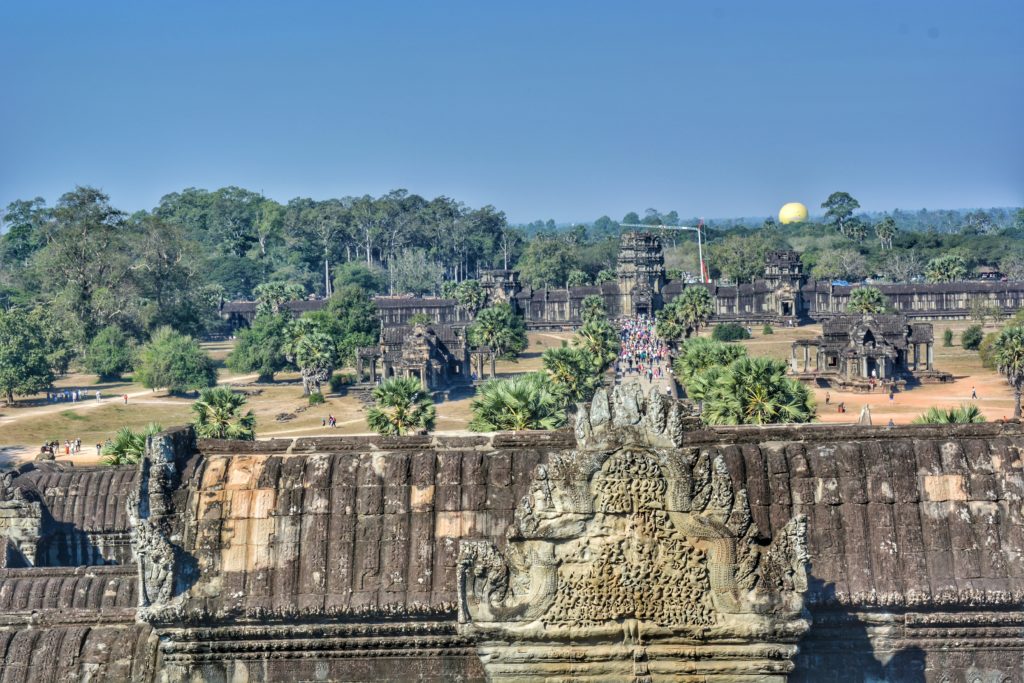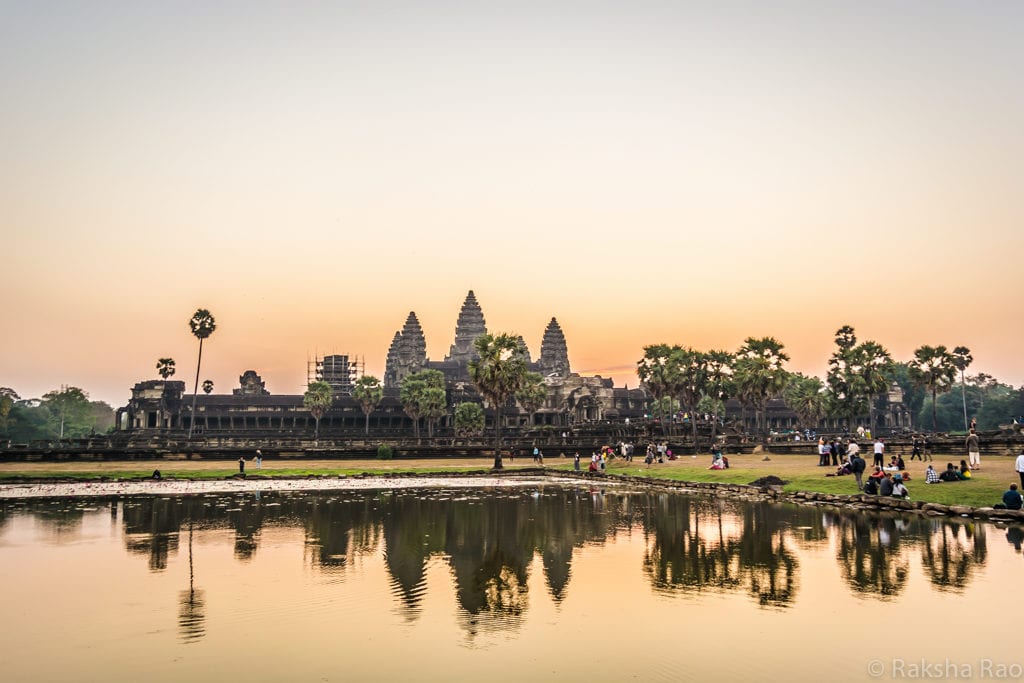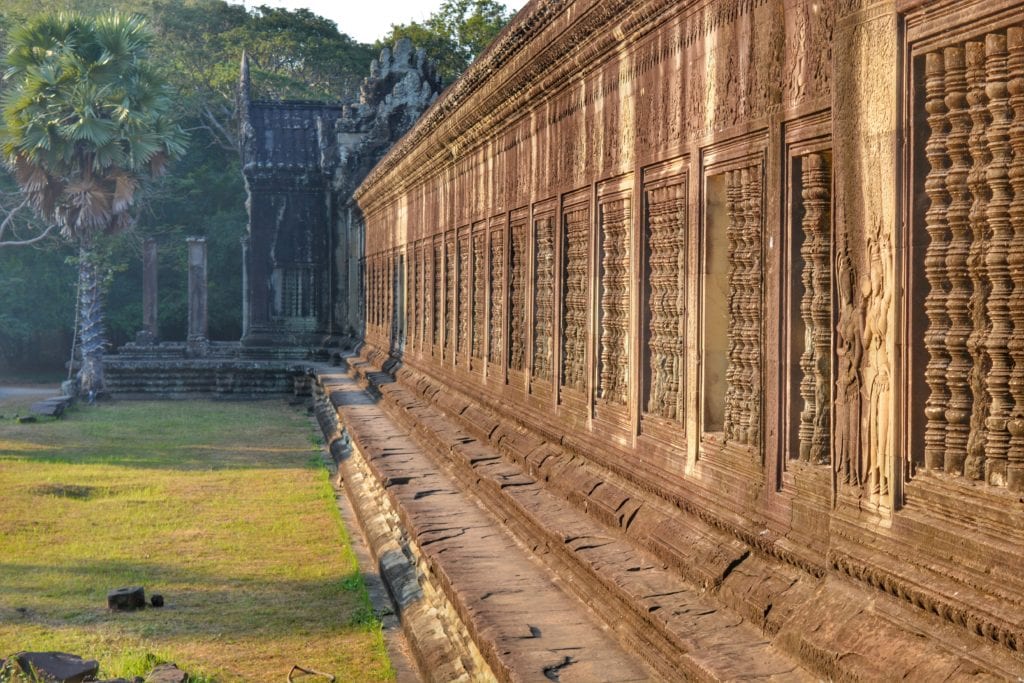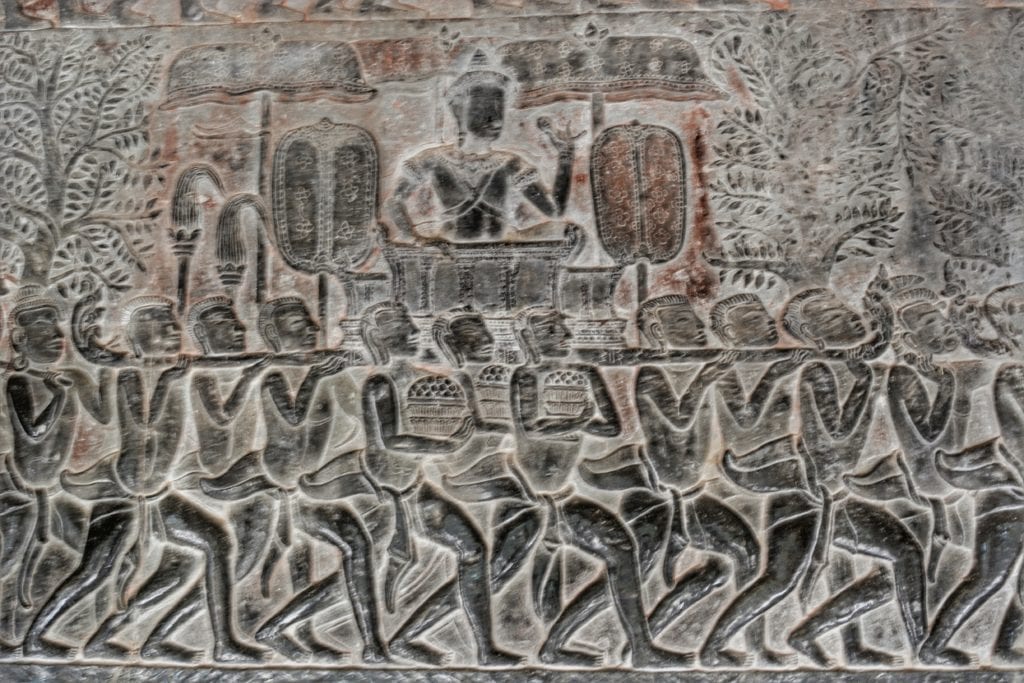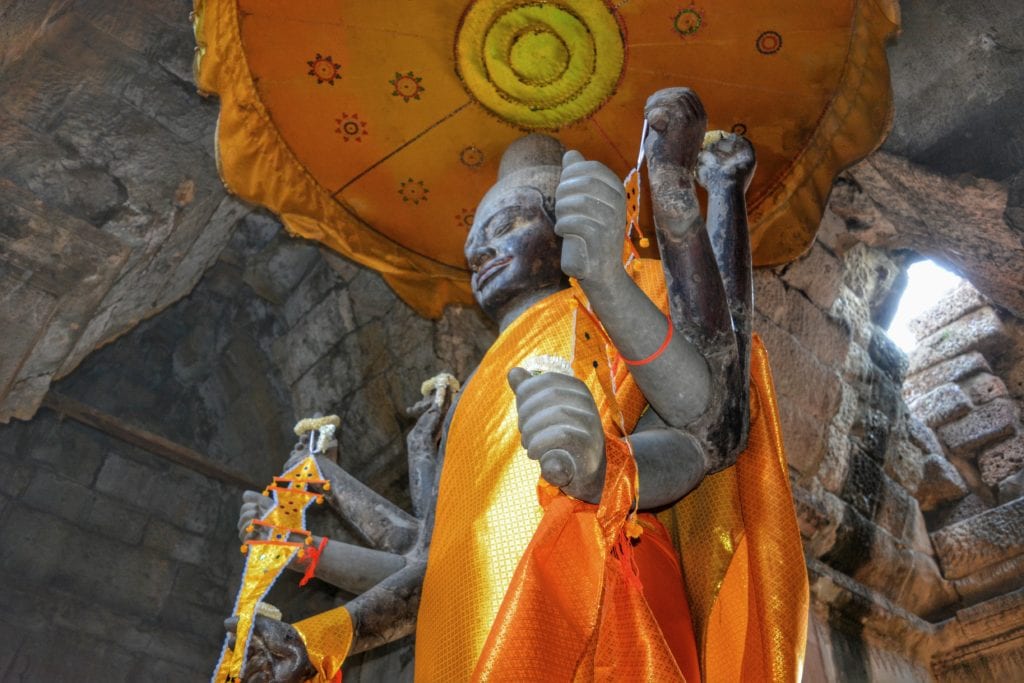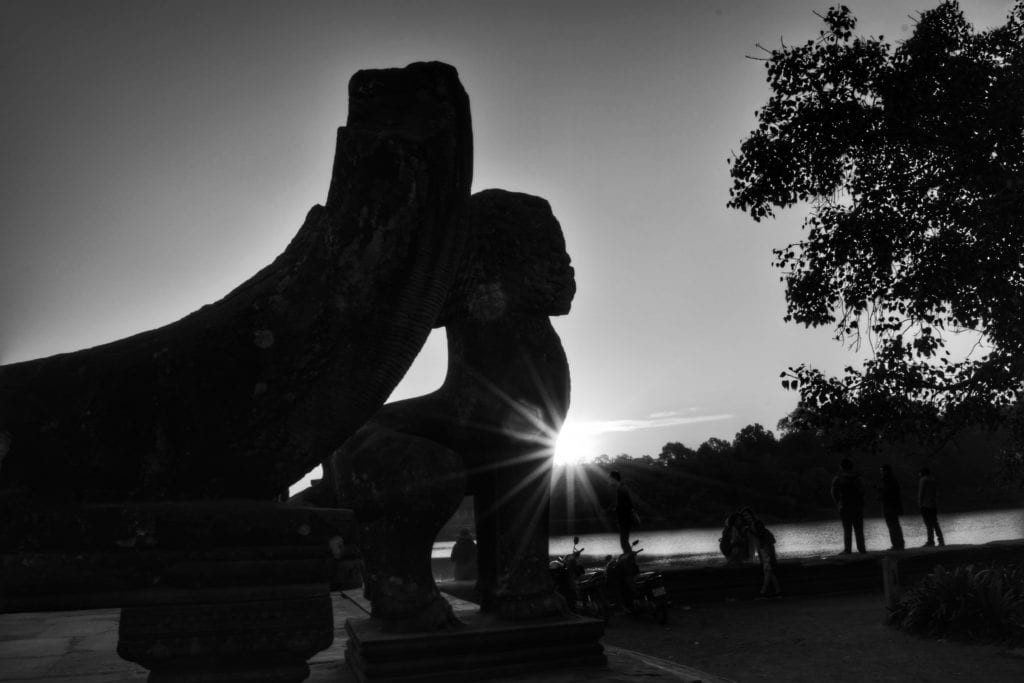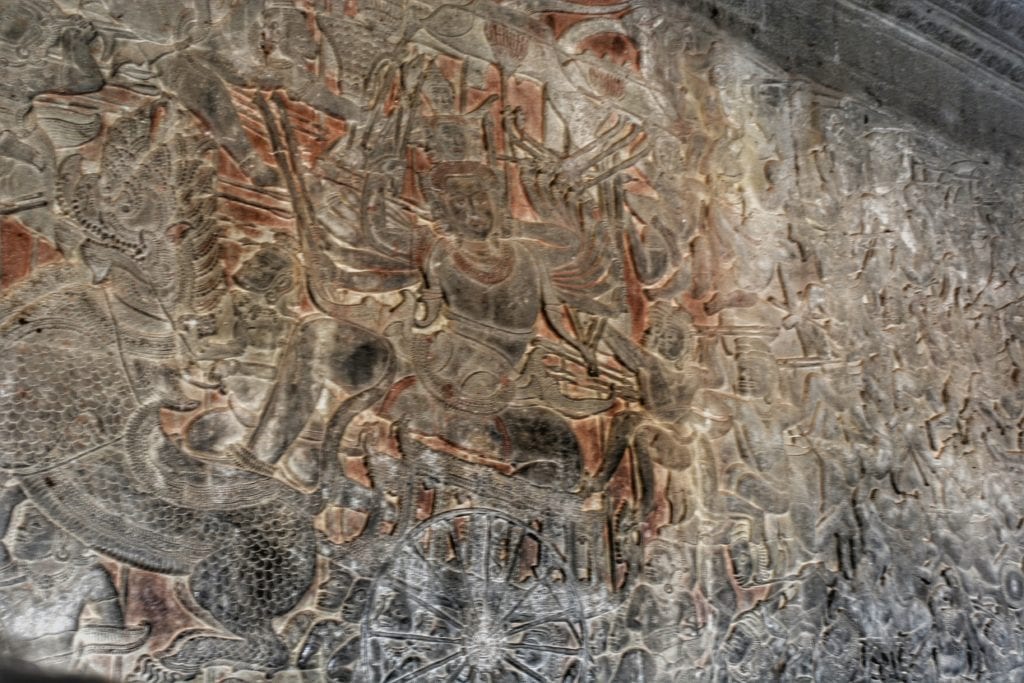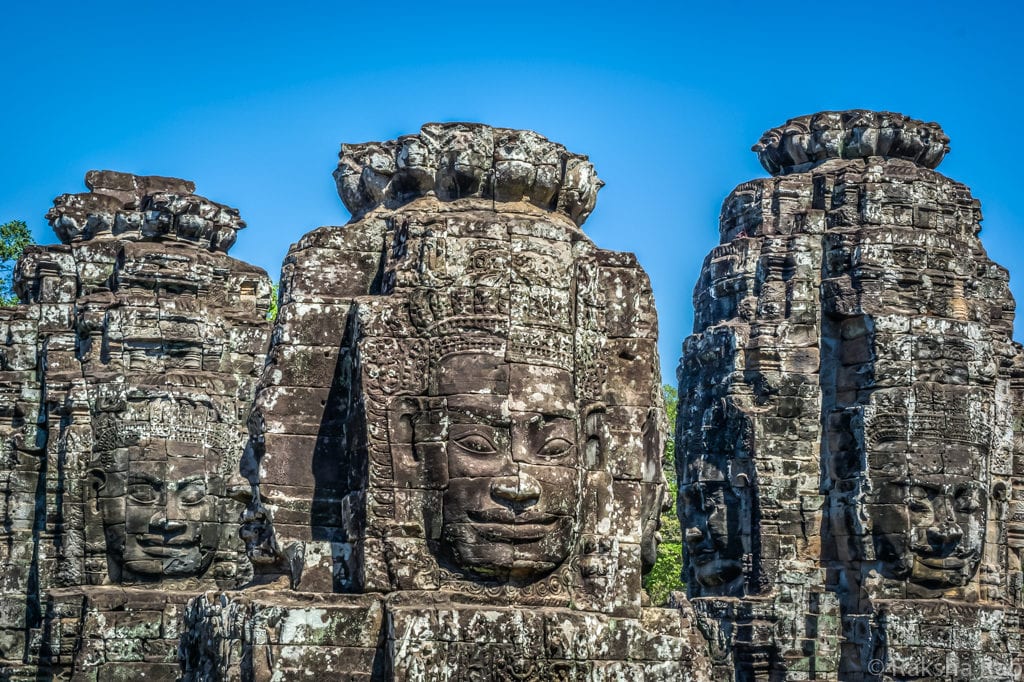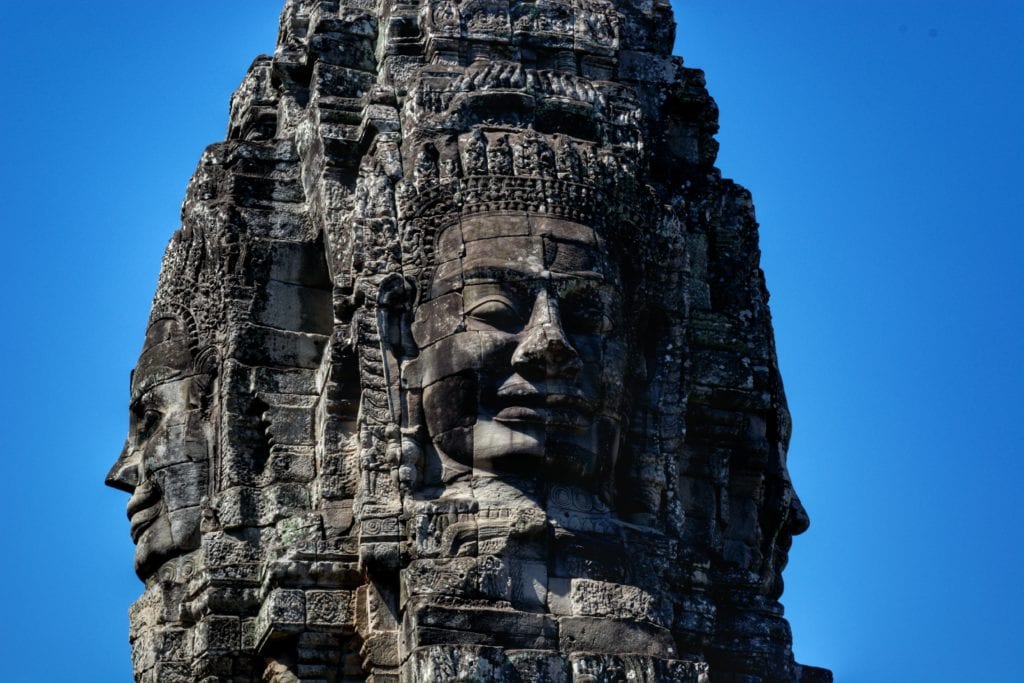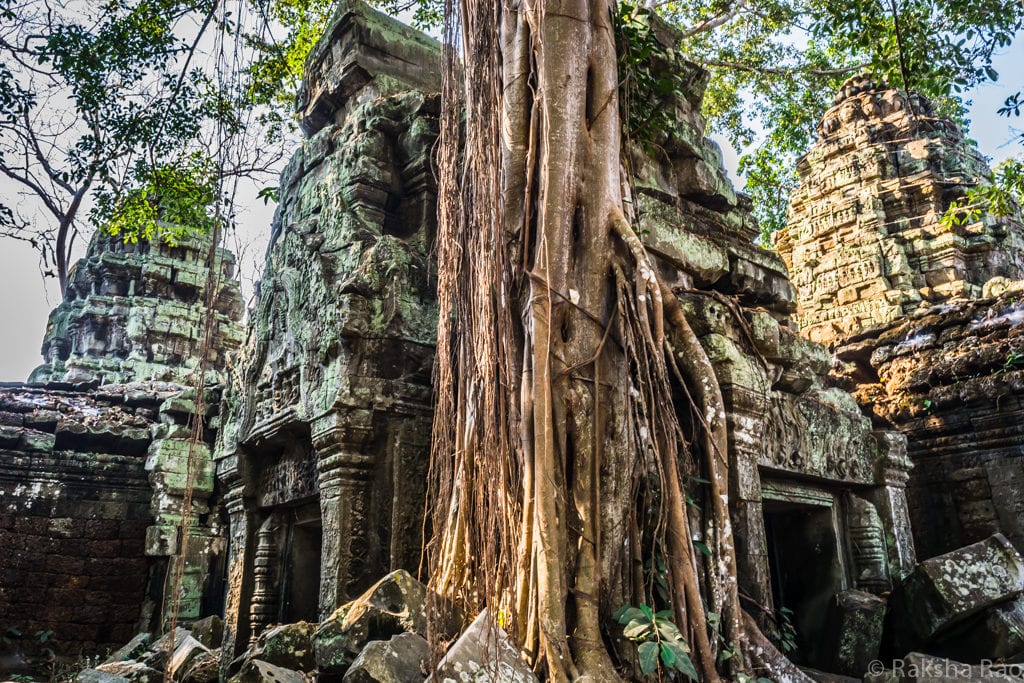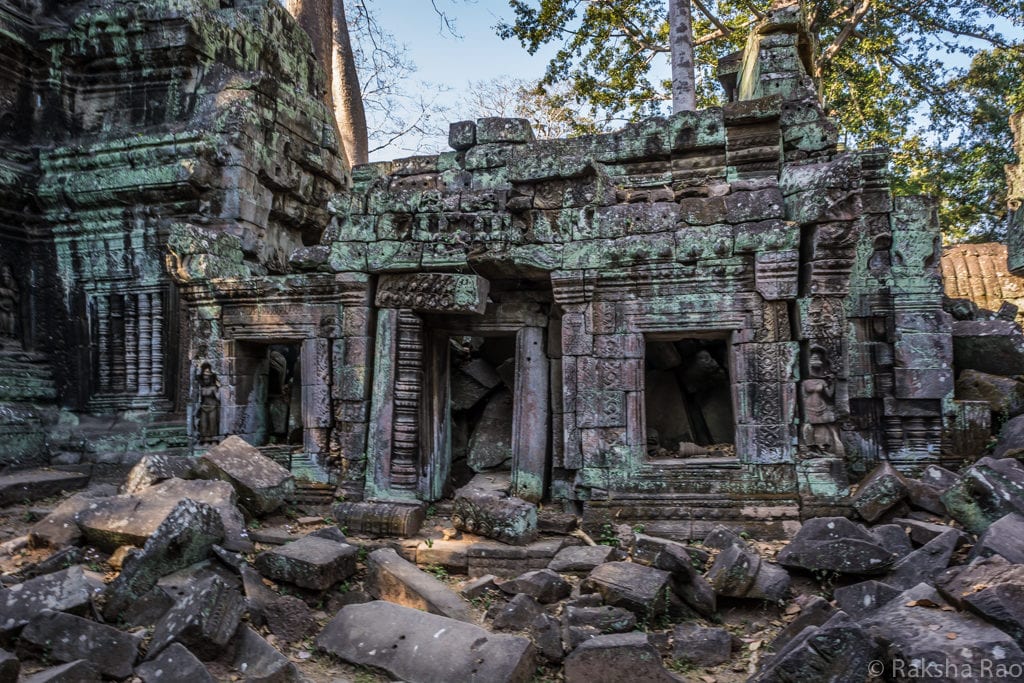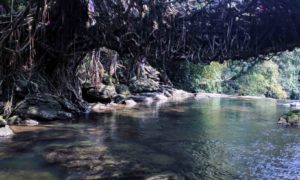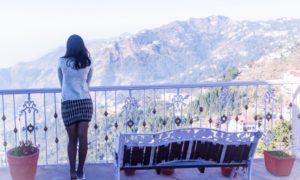THIS POST MAY CONTAIN AFFILIATE LINKS. AS AN AMAZON ASSOCIATE I EARN FROM QUALIFYING PURCHASES. PLEASE READ THE DISCLOSURE FOR MORE INFORMATION
No matter how many photos of Angkor Wat I had come across before, nothing came close to the incredible experience of watching the sunrise at the temple, firsthand. Albeit, with thousands of tourists dashing through to watch the sunrise at 5 AM being a mood killer, the aura of the spectacular structure of the temple more than makes up for it.
Additional Read: If you’d like to know all that Siem Reap has to offer or find out the BEST places to stay in Siem Reap, check out – Places to visit in Siem Reap
Siem Reap Angkor Wat temples
The sunrise at the Angkor Wat, the land of smiling Buddha’s at Bayon, the root entwined structure at Ta Phrom, majestic sunset at Phnom Bakheng left me spellbound and I was in awe of the magnificent architecture of the Khmer empire – with monuments, bas-reliefs and the edifice standing testimony to its rich heritage.
Most of the temples are now in ruins after being subjected to harsh tests of time. Consequently, it is now undergoing restoration and is at different stages in different temples.
The city of Angkor where all of these temples are located was once the capital of the Khmer Empire. Evidently, in the past, the population of the city is said to have reached one million. That figure, in consequence, makes it the largest city in the world before the Industrial Revolution.
It has over thousand temples, ranging from brick rubble to the most preserved ones, each with its own history. And, most of the major temples date back to 12th – 13th century. So, it can be overwhelming at times to witness the ruins of these ancient temples and wonder what it would have been in all its glory.
Our temple guide told us about the fascinating history of the Angkor temples and the gruesome tyranny Cambodia witnessed just 40 years ago. The consequences of the fascism can still be witnessed to this day. As a result, the economy and the community of Cambodia has taken a major hit.
Find latest prices for Angkor Temple Complex Sunrise Tour for Small Groups.
For those who would like to explore the city biking – find latest prices for Angkor Temple Complex 9 hour bike tour.
Phnom Bakheng temple
A popular spot for sunset views of the much bigger temple Angkor Wat. Located on top of a hill, it is a Hindu and Buddhist temple in the form of a temple mountain. Built at the end of the 9th century, Phnom Bakheng is, however, one of the most threatened monuments in the temple complex. However, the ravages of time have a taken a toll on its structure. So, taking measures to preserve the temple only 300 people are allowed to enter it at any given time.
Tips for visitors You can earn a free visit to the temples for the current day if you buy temple pass for the next day after 4.45PM. Popular choice is to visit Phnom Bakheng for sunset after 4.45PM.
Angkor Wat
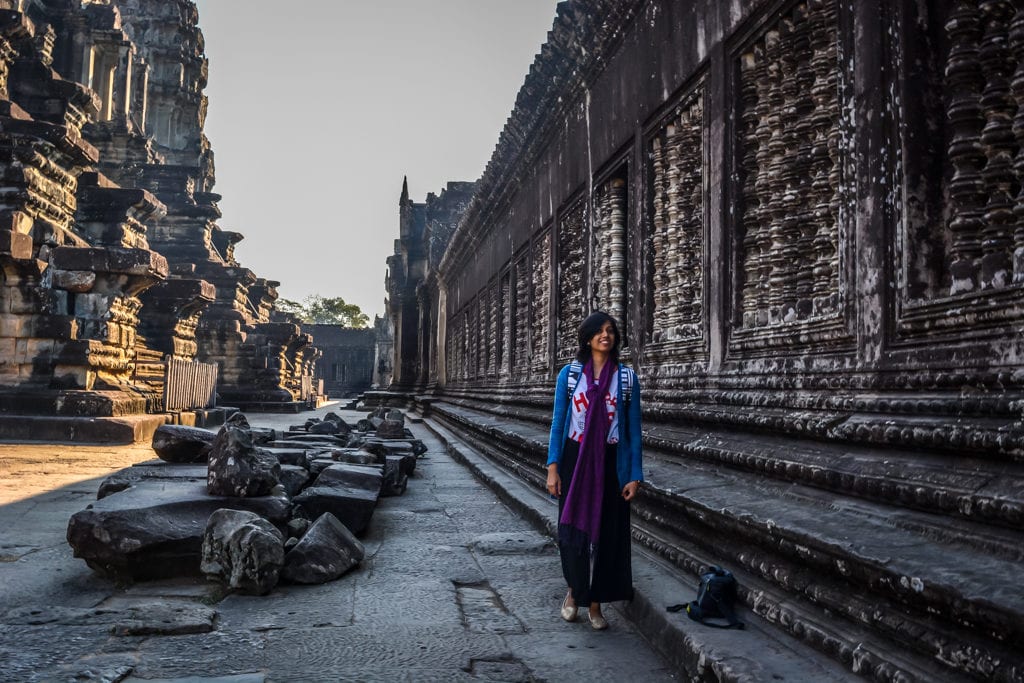
Angkor Wat temple was first a Hindu, later a Buddhist temple complex and the largest religious monument in the world. Breaking from the Shaiva tradition of previous kings, it is instead dedicated to Vishnu. As the best-preserved temple on the site, it is at the top of the high classical style of Khmer architecture. Furthermore, it represents Cambodia on a global level, appears on its national flag, and it is the country’s prime attraction for visitors.
The main temple zone is divided into 3 floors – hell, earth and heaven including 398 rooms with stone carved on ceilings. Apparently, Angkor Wat has a lot of semblances in terms of architecture to the other Hindu temples. As a result, Ramayana and Mahabharata – two well known Hindu epics have been depicted throughout the temples.
The portrayal of the Samudra Mathana(churning of the sea) to produce amrutha (drink of immortality) especially caught my attention. All throughout the temples, there are more than 1796 depictions of devatas(mainly apsaras). And, I felt like I was right back in India on a Hindu pilgrimage tour. However, since Buddhist installations were made once it was converted to a Buddhist temple, it’s now a fusion of both cultures.
Bayon temple
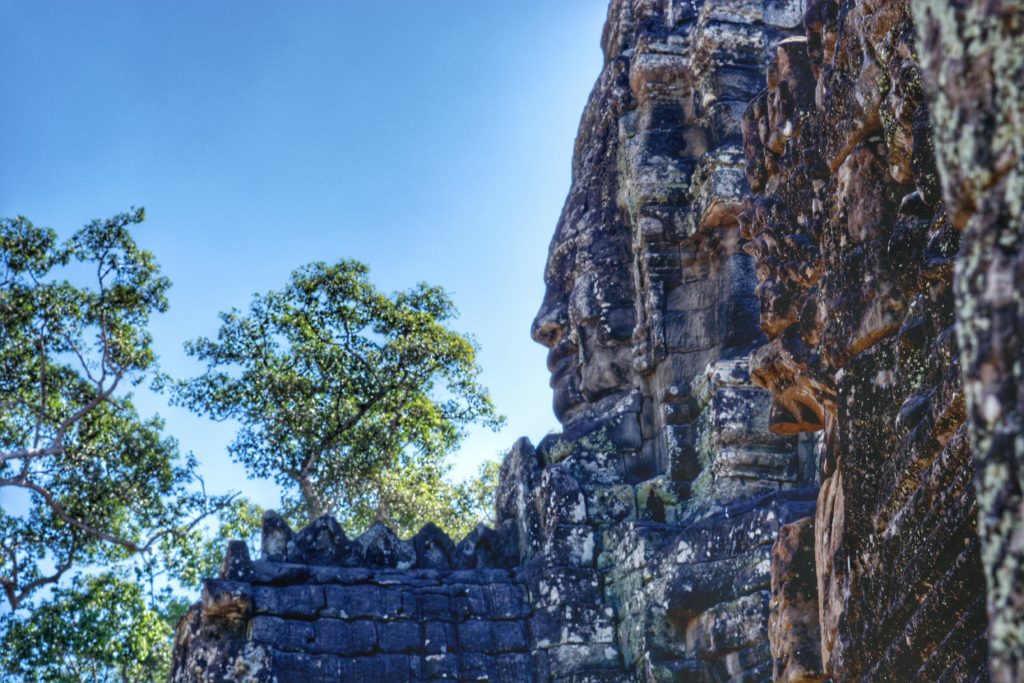
The Bayon temple is a major attraction of the Angkor Thom complex, which is even larger than the Angkor Wat complex. Hailing from India and having paid a visit to my share of Hindu temples, I could see right from the start that Bayon had no semblances to the Hindu temples. All the towers had stone-carved faces on either one or all sides of them. Ranging from the happy face, smirking face to the all-knowing, omniscient face – I found it all quite amusing.
Ta Prohm
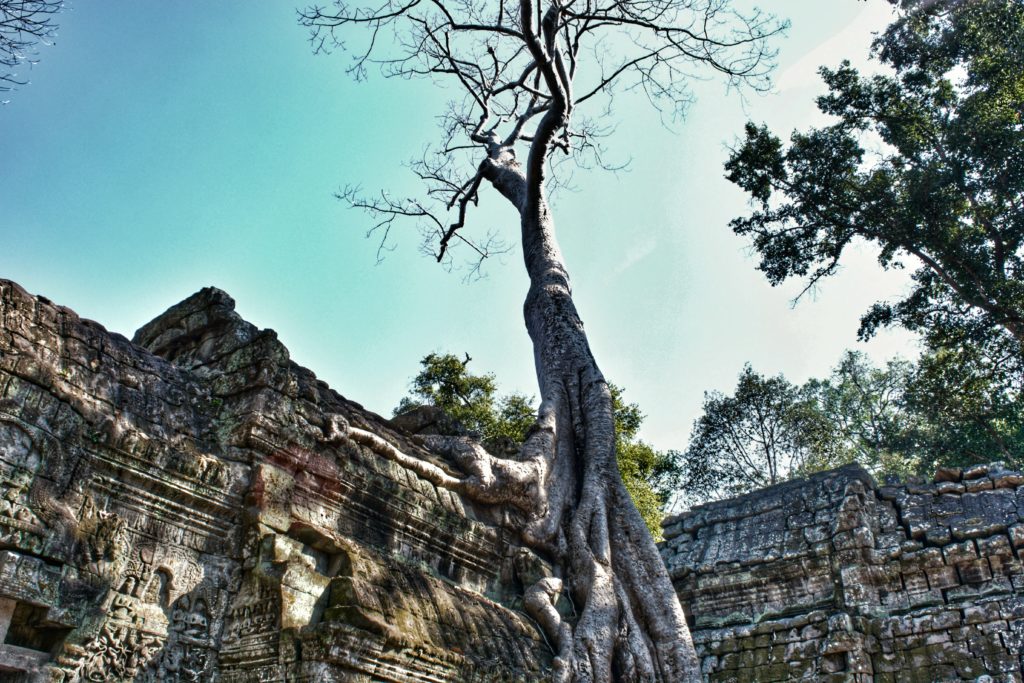
Ta Prohm, famous among tourists as The Tomb Raider temple was founded as a Mahayana Buddhist monastery and university. Unlike other Angkor temples, Ta Prohm is pretty much in ruins and only a small part of the temple is now restored. Seems like the soaring high trees have grown right over the structure and has claimed the temple to itself. Consequently, the trunks and roots are entwined with the structure and make it feel one with the temple. Time and again, you can witness people worshipping at a small section of these temples.
Fun Fact Paramount Pictures paid $10,000 a day for shooting one week at this temple for the Tomb Raider movie released in 2003. The movie also features parts of Angkor Wat and Bayon temples.
Banteay Kdei
Banteay Kdei meaning A Citadel of Chambers is a Buddhist temple in the Bayon architectural style. Almost similar in plan to Ta Prohm and Preah Khan but less complex and smaller.
Prasat Kravan

Prasat Kravan is a small 10th-century temple consisting of five reddish brick towers on a common terrace. And, dedicated to Vishnu in the 10th century – according to an inscription on door jambs.
Visiting Angkor Wat in Siem Reap
It is possible to cover Angkor wat in a day if you’d just like to visit the highlights as part of the small circuit tour. The small tour circuit comprises of Angkor Wat, Bayon, Ta Phrom, Banteay Kdei and Prasat Kravan temples. If time is a constraint, you can probably skip Banteay Kdei since it’s similar to Ta Phrom. However, rest of the temples in the small circuit are unique and offers a different view of the Khmer architecture.
Tuk-tuk drivers usually charge $15-$20 per day for the small circuit. In addition, group guides cost about $30-$35 per day for all of these temples. Also, taxis are available. Rent cycles if you are keen to venture out on their own. However, it could get hot and tiresome for a single day, small circuit tour. You are warned!
Procure a temple pass to visit the Angkor temples which come in one day, three days and a seven-day pass. If your idea of a temple visit is just visiting the main temples of Angkor, then one day pass would suffice and it costs $20. Three days and seven-day pass cost $40 and $60 for one week and one month as validity respectively.
Have you ever visited the historic Siem Reap Angkor Wat temples? Let me know in the comments below.
